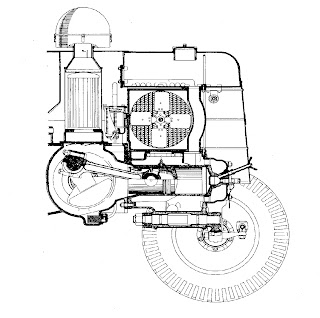SYNCHROMESH GEAR BOX
Synchromesh gear box is an automatic means for matching the speeds of engaging dogs. Synchromesh gear box is a device which facilitates the coupling of two shafts rotating at different speeds. Synchromesh unit is used in most of modern gear boxes. In synchromesh gear box, sliding dog clutches are replaced by synchromesh device. The synchromesh devices are used to simplify the operation of changing gear. Synchromesh device helps unskilled drivers to change gears without the occurrence of clashes and damages.
By synchromesh device, the members which ultimately are to be engaged positively are first brought into frictional contact and then when the friction has equalized their speeds, the positive connection is made.
The basic requirements of synchromesh device are:
(1) A braking device such as cone clutch.
(2) To permit easy meshing means of releasing pressure on the clutch before engagement of gears.
The engine shaft carries a pinion which meshes with a wheel fixed to the layshaft, while the gear on the mainshaft is free to rotate and is permanently meshed with another wheel fixed to the layshaft. Both the pinion and the wheel on the mainshaft have integral dog tooth portions and conical portions. The synchronizing drum is free to slide on splines on the mainshaft. This drum has conical portions to correspond with the conical portions on the gearbox shaft pinion and on the wheel that rotates freely on the mainshaft. The synchronizing drum carries a sliding sleeve. In the neutral position, the sliding sleeve is held in place by the spring loaded balls which rest in the dents in the sliding sleeve (or ring gear). There are usually six of these balls.
In changing gear, the gear lever is brought to the neutral position in the ordinary way, but is immediately pressed in the direction it has to go to engage the required gear. When a shift starts, the spring loaded balls cause the synchronizing drum and sliding sleeve, as an assembly to move toward the selected gear. The first contact is between the synchronizing cones on the selected gear and the drum. This contact brings the two into synchronization. Both rotate at the same speed. When the speeds of the two have become equal, a slightly greater pressure on the gear lever overcomes the resistance of the balls. Further movement of the shift fork forces the sliding sleeve on toward the selected gear. The internal splines on the sliding sleeve i.e. the dog portion, match the external splines on the selected gear the dog teeth are locked up, or engaged, and thus positive connection is established. The gear shift is completed.







